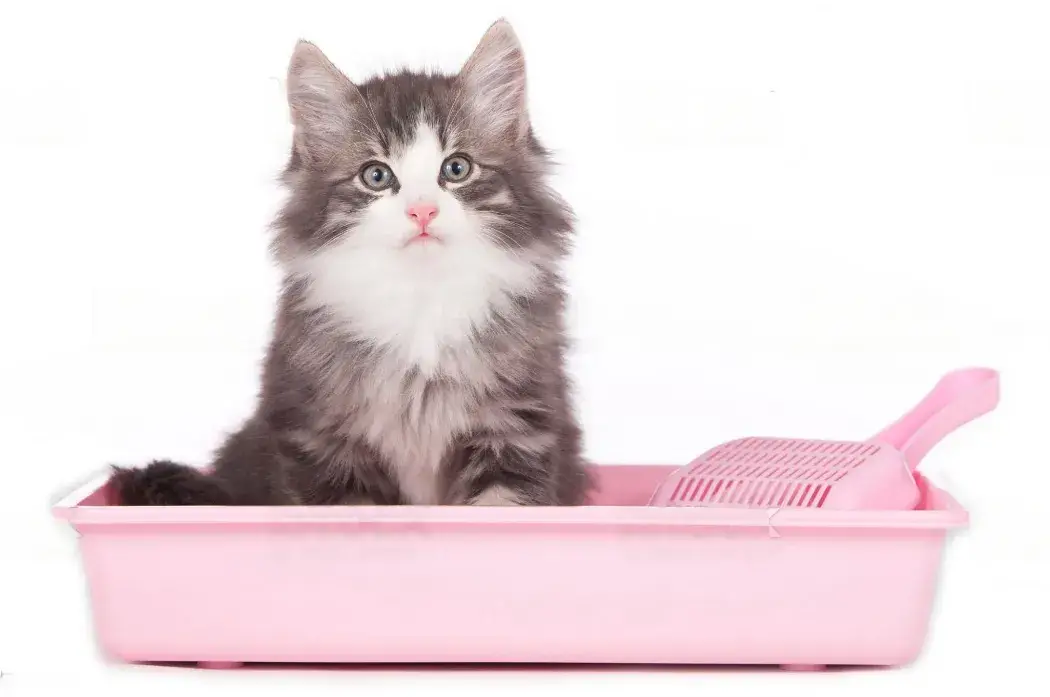How many litter boxes for 1 cat

Published by: CatsLib
3 Min Read
Factors such as the size of your home, your cat's preferences, and any medical conditions they might have can influence the decision. If you have a larger home or multiple floors, having multiple litter boxes can make it easier for your cat to access a box without having to travel far. Some cats have a preference for urinating in one box and defecating in another, and providing multiple boxes accommodates their preferences.
Introducing changes, such as a new cat or rearranging furniture, can also affect your cat's litter box behavior. In such cases, having extra litter boxes can help ease any stress related to these changes. Ultimately, maintaining clean litter boxes is crucial regardless of the number you choose. Regular scooping of waste and cleaning the boxes will prevent litter box aversion and keep your cat comfortable.
As a general guideline, having one litter box per cat, along with an additional box, is often recommended. For a single cat, this translates to having two litter boxes. However, your cat's behavior and your home's layout will provide the best clues about their needs. Pay attention to their habits and comfort to determine the most suitable litter box arrangement for your furry companion.
Can you put two litter boxes next to each other?
Yes, you can place two litter boxes next to each other if your cat is comfortable with that arrangement. Some cats might prefer having multiple litter boxes close together, while others might prefer them in different areas of the house. It's important to observe your cat's behavior and preferences to determine if placing the litter boxes next to each other is suitable for them.
Here are some considerations:
Convenience: Placing litter boxes next to each other can be convenient for your cat, especially if they like to switch between urinating and defecating frequently.
Preference: Some cats feel more secure with multiple litter box options close by, as it provides them with choices and reduces the chances of one box being occupied.
Transition Period: If you're introducing a new litter box, having it next to an existing one can help your cat adapt more easily, as they can associate the new box with a familiar scent.
Territorial Behavior: While many cats don't mind sharing litter boxes, some might be territorial and prefer their own space. If you notice any signs of tension or aggression, it might be best to separate the boxes.
Cleanliness: Cats are known for being particular about cleanliness. If one litter box becomes soiled, your cat might avoid both boxes. Regular cleaning is essential.
Preferences: Cats have individual preferences. If you notice your cat avoiding one box even though it's clean, consider moving the boxes to different locations.
Stress or Anxiety: Some cats might be stressed by the close proximity of another cat using the litter box, especially if they're anxious or easily intimidated.
Ultimately, the best approach depends on your cat's behavior and comfort. If you're considering placing litter boxes next to each other, try it out and observe how your cat responds. If your cat seems comfortable and there are no issues with territorial behavior, then having two litter boxes side by side can be a suitable arrangement.

How many litter boxes per cat?
The recommended number of litter boxes per cat can vary depending on factors such as your cat's preferences, the size of your home, and the number of cats you have. As a general guideline, having one litter box per cat, plus an extra one, is often recommended. This means that for a single cat, you would have two litter boxes. Here's why having multiple litter boxes can be beneficial:
Convenience: Cats, like people, have preferences for privacy and cleanliness. Having multiple litter boxes ensures that your cat always has a clean and accessible option nearby.
Avoiding Conflicts: Some cats are territorial and might not want to share a litter box with other cats. Having multiple boxes can prevent conflicts and stress.
Preference: Cats have individual preferences for using the litter box. Some cats prefer one box for urinating and another for defecating. Providing options accommodates their preferences.
Backup Option: If one litter box becomes soiled, your cat has another option available while you clean the dirty one.
Sickness or Anxiety: Cats can become stressed or anxious for various reasons. Having multiple litter boxes can be especially important during times of illness or stress.
Multi-Story Homes: If you have a multi-story home, having litter boxes on each level can prevent your cat from having to travel long distances to find a box.
Multi-Cat Households: If you have multiple cats, the rule of thumb is to have at least one litter box per cat, plus an extra box. This can help prevent territorial disputes and ensure that all cats have access to a litter box.
Remember, these are general guidelines, and some cats might do perfectly well with just one litter box. Observing your cat's behavior and preferences will provide the best insight into their needs. If you notice any changes in litter box behavior, such as avoiding the box or urinating outside of it, consult your veterinarian to rule out any medical issues. Providing clean, well-maintained litter boxes is key to keeping your cat happy and healthy.



